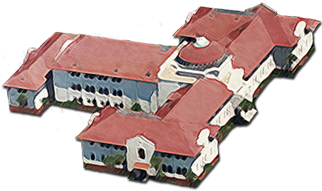A special act of the Georgia Legislature established an institution of higher learning in Valdosta, Georgia, in 1906. However, no appropriation was made for buildings or maintenance until the summer of 1911, when the State appropriated $30,000 for a building and equipment.
With a community enthusiasm that has continued to the present day, the City of Valdosta first donated 60 acres of land and $50,000 to be used toward establishing the college. The first building, Converse Hall, was erected and furnished at a cost of $55,000.
In 1912, the Legislature granted an adequate annual appropriation for maintenance, and the future of the institution was assured. The college, called the South Georgia State Normal College, opened to “young ladies” on January 2, 1913, and offered two years of college work.
An act of the Legislature in 1922 changed the institution’s name to Georgia State Womans College at Valdosta and authorized a four-year program leading to the bachelor’s degree. The Board of Regents made the school coeducational in 1950 and changed the name to Valdosta State College.
In 1993, Valdosta State College was named a Regional University. In fall 1998, Valdosta State University adopted the semester system, along with other units of the University System of Georgia.
The institution has been led by 10 presidents: Richard Holmes Powell (1913-1933), Jere Madison Pound (1933-1935), Frank Robertson Reade (1935-1948), James Ralph Thaxton (1948-1966), Sidney Walter Martin (1966-1978), Hugh Coleman Bailey (1978-2001), Ronald M. Zaccari (2002-2008), Patrick J. Schloss (2008-2011), Interim President Louis H. Levy (2011-2012), William J. McKinney (2012-2015), and Interim President Cecil P. Staton (2015- ).
Valdosta State University offers undergraduate work leading to the following degrees: the Associate of Applied Science, the Associate of Arts, the Bachelor of Arts in 15 major programs, the Bachelor of Science in 8 major programs, the Bachelor of Science in Education in 9 major programs, the Bachelor of Business Administration in 7 major programs, the Bachelor of Fine Arts in 7 major programs, the Bachelor of Music in 2 major programs, the Bachelor of Science in Nursing, the Bachelor of Science in Exercise Physiology, the Bachelor of Science in Athletic Training, and the Bachelor of Applied Science.
Graduate degrees offered include the Master of Education in 14 major programs, the Master of Arts in 3 major programs, the Master of Science in 5 major programs, the Master of Arts in Teaching in 5 major programs, the Master of Public Administration, the Master of Business Administration, the Master of Accountancy, the Master of Science in Nursing, the Master of Music Education, the Master of Social Work, the Master of Library and Information Science, the Education Specialist in 5 major programs, the Master of Arts in Communication, the Doctor of Public Administration, the Doctor of Speech-Language Pathology, and the Doctor of Education in 3 major programs. New baccalaureate and graduate degree programs are added from time to time to meet the needs of the population served by the University.



